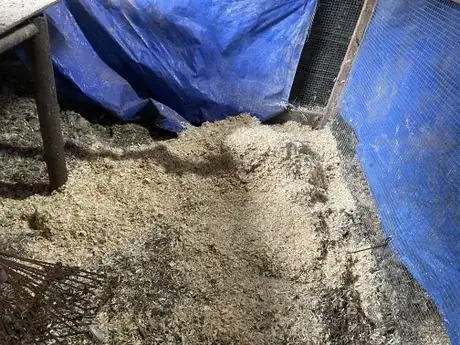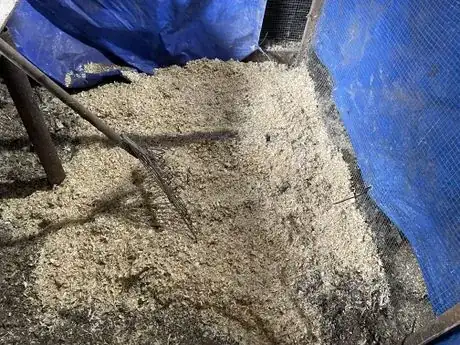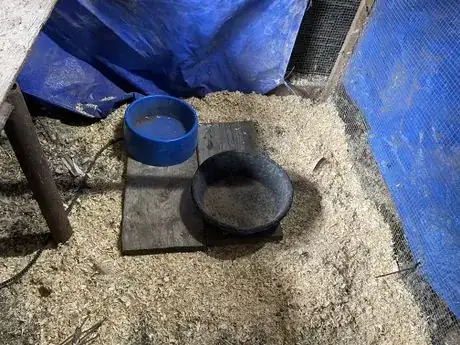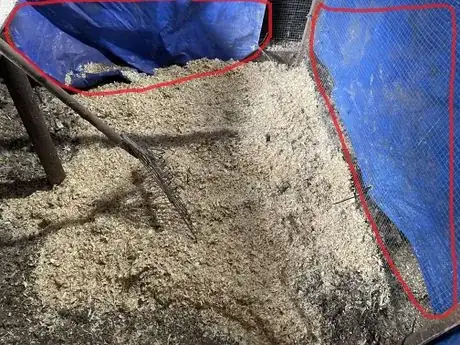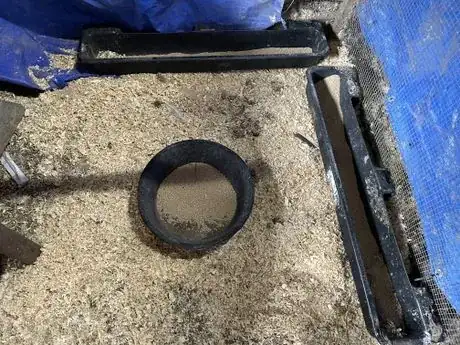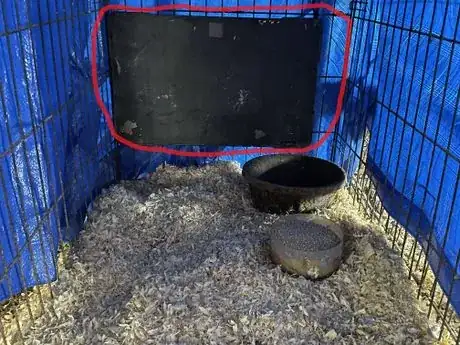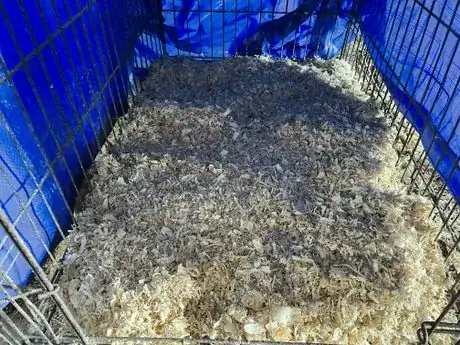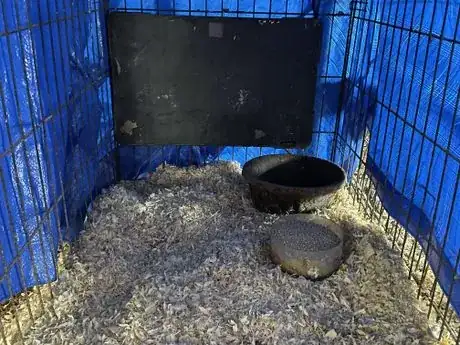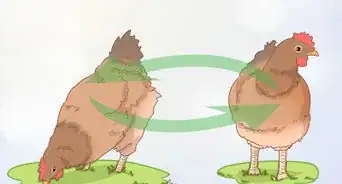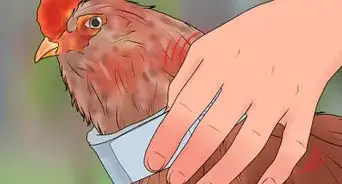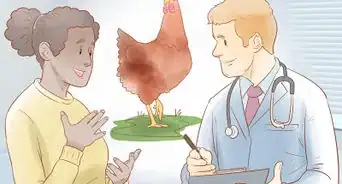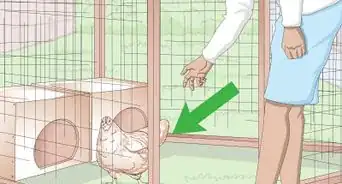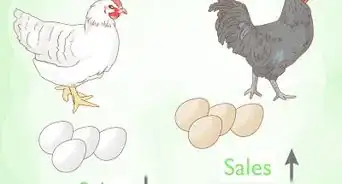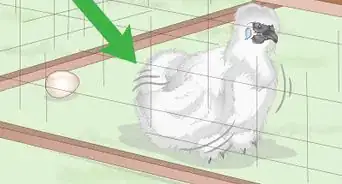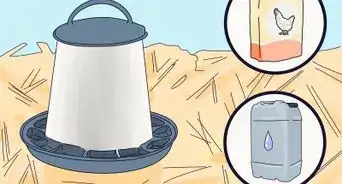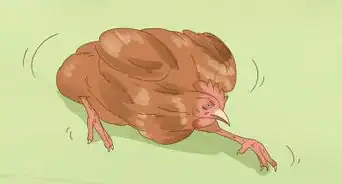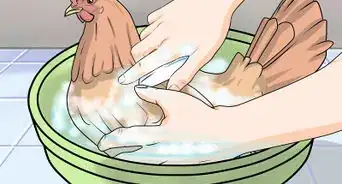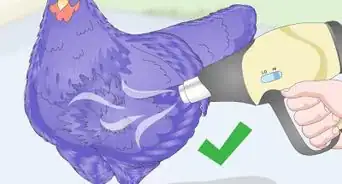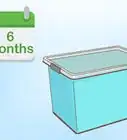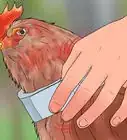wikiHow is a “wiki,” similar to Wikipedia, which means that many of our articles are co-written by multiple authors. To create this article, volunteer authors worked to edit and improve it over time.
Learn more...
Even though chickens do a good job taking care of themselves, they need a little extra help during the colder months. Certain aspects of the coop or pen need to be changed now that the flock is confined to a smaller space. From wind protection to bedding techniques to water and food dish placement, winterizing a pen will take some time to accomplish but with this tutorial it should be easier. It’s an important thing to note that while this article covers the basics of winterizing a chicken pen, some breeds many need more or less preparation. It all depends on the individual breed of chicken and how susceptible they are to the cold so look into the breed and determine what they would need.
Steps
Preparing a Coop For Winter
-
1Spread a thick layer of sawdust on the floor of the enclosure. Use a rake, shovel, or pitchfork to evenly spread out the bedding. The flock will also do a good job of spreading the sawdust around themselves. Make sure there is a good, thick layer put down since the pen/coop shouldn’t be fully cleaned out until after the winter months.
- When picking out the kind of sawdust, it’s important to know what allergies the breeds in the flock may have. If you aren’t 100% sure what allergies they may have stay away from cedar shavings as they can be harmful to chickens due to their natural oils.
-
2Use the “Deep Litter Method” throughout the winter. Don’t completely clean out the pen during winter. Instead stir up the old bedding and add a new, thin layer of sawdust as needed and let the flock do its thing.
- This allows the old bedding to form a compost layer which not only creates heat, but also consumes the unhealthy bacteria from the flock’s waste.
Advertisement -
3Consider using heated or rubber water dishes. During winter the temperature will almost certainly drop below freezing, so any water you give your chickens is going to freeze. Make sure you have appropriate water dishes to ensure your flock has a constant source of water that's also easy for you to maintain.
- Heated water dishes stay warm to prevent any water inside from freezing. This option is easier to maintain, but these dishes can be expensive and there needs to be an electric outlet nearby to plug the dish in.
- Rubber dishes are a good alternative. These won’t break when trying to chip the ice out of them.
-
4Keep your chickens safe from wind and wildlife. If there are any openings in the walls of the pen, cover them with a tarp so that the wind doesn’t directly hit the flock. If there are any openings close to the ground, put netting with small holes or other material that would make it impossible for mice or other creatures to get in. They can transmit diseases to the flock and, if the heated water dishes are being used, enjoy the heat.
-
5Give generous spacing when putting down feed and water dishes. With the flock being cooped up in a smaller than usual space, the pecking order is going to go through some changes. Placing the dishes with a good amount of space in between allows the chickens lower in the pecking order to get food as those higher may try to stop them from eating/drinking from “their” dishes.
Preparing an Emergency Pen
-
1Consider preparing a separate pen for emergencies. Whether it be due to sickness, frostbite, or the pecking order changes a bird may need a little extra help getting better. A good way to do this is to put them in a separate pen so they can heal without the strain of being around the other birds.
-
2Spread a layer of sawdust in the enclosure. Add some bedding to help keep your chicken comfortable while in recovery. This layer does not need to be as thick as your usual coop, but be sure to add more than enough to cover the floor.
-
3Put in a heater. The chicken will probably need extra heat to help get itself back to normal and, while being alone is best so that it has no competition for food, it won’t be able to get heat from the flock. But make sure to have spots in the pen that the bird can get away from the heater if it wants.
-
4Place a tarp around any open spots on the pen. This is to help keep the bird away from any wind and to keep the heat in the pen.
-
5Put the water and food dishes close to the heater. This lets the bird easily get to the food and water without having to leave the heat.
